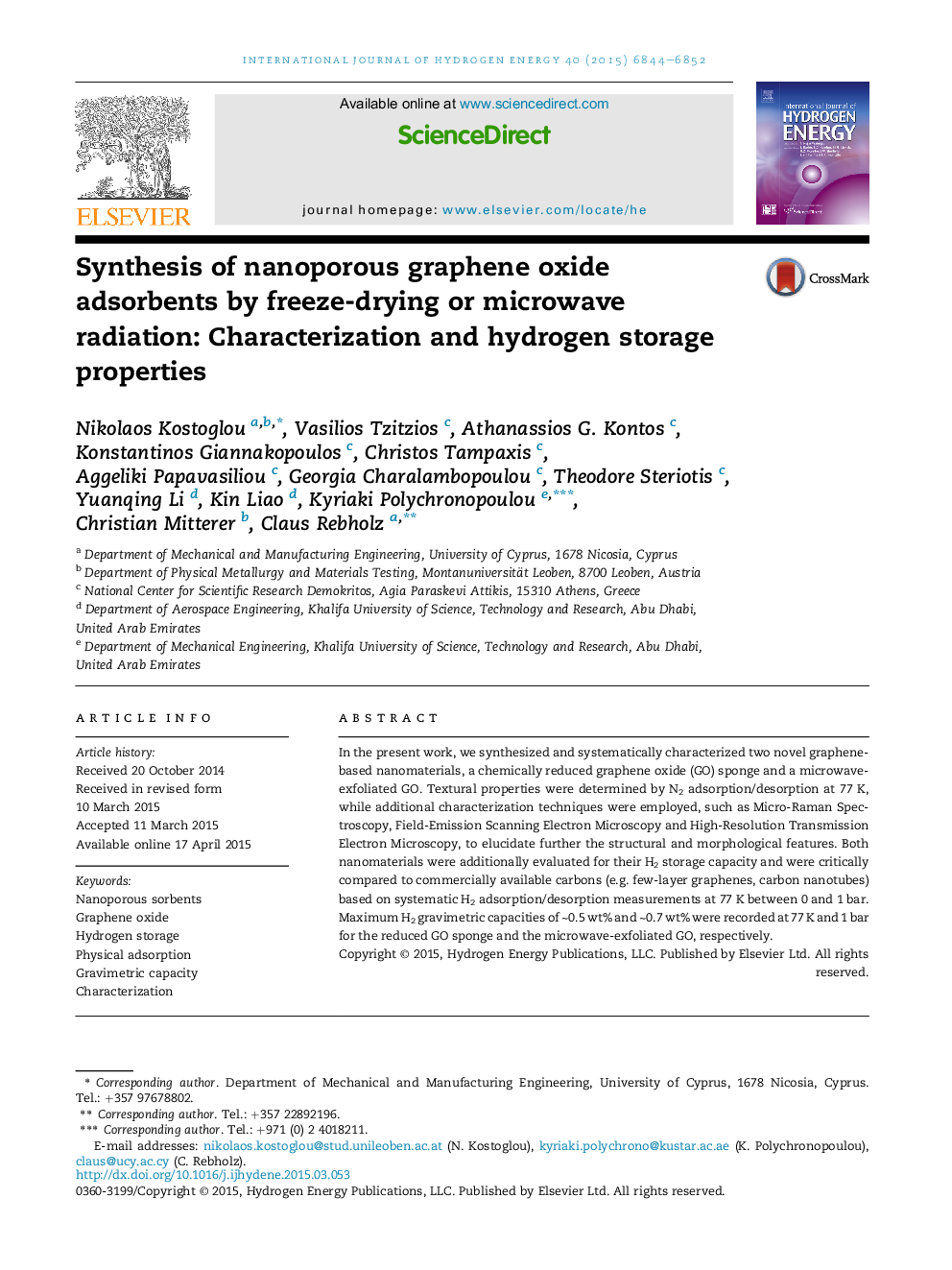| Article ID | Journal | Published Year | Pages | File Type |
|---|---|---|---|---|
| 1271196 | International Journal of Hydrogen Energy | 2015 | 9 Pages |
•High-surface area GOs were synthesized by freeze drying and microwave radiation.•Porosity, structure and morphology were studied by BET, Raman, SEM and TEM.•H2 storage capacity was evaluated against commercial nanocarbons.•Reversible H2 storage with gravimetric capacities 0.5–0.7 wt% at 77 K and 1 bar.•H2 storage behavior was correlated to specific textural/surface features.
In the present work, we synthesized and systematically characterized two novel graphene-based nanomaterials, a chemically reduced graphene oxide (GO) sponge and a microwave-exfoliated GO. Textural properties were determined by N2 adsorption/desorption at 77 K, while additional characterization techniques were employed, such as Micro-Raman Spectroscopy, Field-Emission Scanning Electron Microscopy and High-Resolution Transmission Electron Microscopy, to elucidate further the structural and morphological features. Both nanomaterials were additionally evaluated for their H2 storage capacity and were critically compared to commercially available carbons (e.g. few-layer graphenes, carbon nanotubes) based on systematic H2 adsorption/desorption measurements at 77 K between 0 and 1 bar. Maximum H2 gravimetric capacities of ∼0.5 wt% and ∼0.7 wt% were recorded at 77 K and 1 bar for the reduced GO sponge and the microwave-exfoliated GO, respectively.
